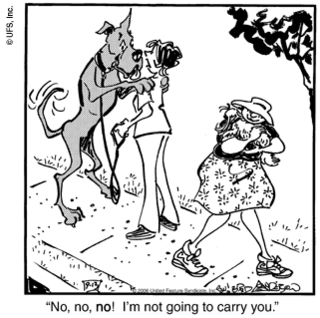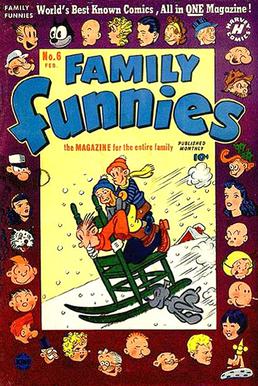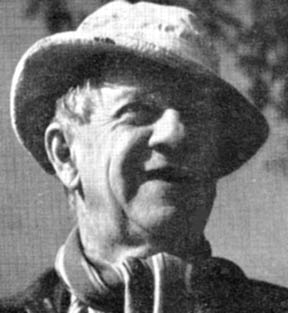Books

Some of the daily strips were later reprinted:
- Bobby Thatcher's Romance (1931)
- Bobby Thatcher and the Treasure Cave (1932).
| Bobby Thatcher | |
|---|---|
| Author(s) | George Storm Sheldon Mayer (1937) |
| Current status/schedule | concluded |
| Launch date | March 21, 1927 |
| End date | October 16, 1937 |
| Syndicate(s) | McClure Newspaper Syndicate |
| Preceded by | Ben Webster's Career |
Bobby Thatcher was an American newspaper adventure comic strip created by the cartoonist George Storm. Storm launched Bobby Thatcher March 21, 1927, for the McClure Syndicate. The series ran until October 16, 1937. [1]
Sheldon Mayer worked on the strip for the last five months, from June 7 to October 16, 1937. [1]
The plot followed the adventures of 15-year-old Bobby Thatcher, who is mistreated by his guardian, Jed Flint. Bobby runs away from home to seek his fortune and find the whereabouts of his sister Hattie. The storyline soon erupted into high adventure as the honest, hard-working Bobby saves lives and becomes involved with criminals and other unsavory characters.
The central character's name was spelled "Bobbie" in early episodes.

Some of the daily strips were later reprinted:
Bobby Thatcher creator George Storm was born in 1893 and died in 1976. Storm was on the staff of the San Francisco Daily News in 1922. and three years later he began his first newspaper strip, Phil Hardy, scripted by Jay Jerome Williams under the pseudonym Edwin Alger, Jr. When Phil Hardy came to an end after 11 months. Storm drew Ben Webster's Career (Bell Syndicate, 1925–26) before coming up with Bobby Thatcher.
During the 1940s, Storm drew for DC Comics, Fawcett and Dell Comics.
A year after his death, his comic strips were collected in Bobby Thatcher, Including Philip Hardy: A Compilation, 1925-1927 (Hyperion Press, 1977) with an introduction by Bill Blackbeard.

A comic strip is a sequence of cartoons, arranged in interrelated panels to display brief humor or form a narrative, often serialized, with text in balloons and captions. Traditionally, throughout the 20th and into the 21st century, these have been published in newspapers and magazines, with daily horizontal strips printed in black-and-white in newspapers, while Sunday papers offered longer sequences in special color comics sections. With the advent of the internet, online comic strips began to appear as webcomics.

Little Orphan Annie is a daily American comic strip created by Harold Gray and syndicated by the Tribune Media Services. The strip took its name from the 1885 poem "Little Orphant Annie" by James Whitcomb Riley, and it made its debut on August 5, 1924, in the New York Daily News.

King Features Syndicate, Inc. is an American content distribution and animation studio, consumer product licensing and print syndication company owned by Hearst Communications that distributes about 150 comic strips, newspaper columns, editorial cartoons, puzzles, and games to nearly 5,000 newspapers worldwide. King Features Syndicate also produces intellectual properties, develops new content and franchises, like The Cuphead Show!, which it produced with Netflix, and licenses its classic characters and properties. King Features Syndicate is a unit of Hearst Holdings, Inc., which combines the Hearst Corporation's cable-network partnerships, television programming and distribution activities, and syndication companies. King Features' affiliate syndicates are North America Syndicate and Cowles Syndicate.

Marmaduke is a newspaper comic strip revolving around the Winslow family and their Great Dane, Marmaduke, drawn by Brad Anderson from June 1954 to 2015.

Wash Tubbs is an American daily comic strip created by Roy Crane that ran from April 14, 1924 to 1949, when it merged into Crane's related Sunday page, Captain Easy. Crane left both strips in 1943 to begin Buz Sawyer, but a series of assistants, beginning with Leslie Turner, kept the combined Captain Easy daily and Sunday strips going until October 1, 1988.

Captain Easy, Soldier of Fortune is an American action/adventure comic strip created by Roy Crane that was syndicated by Newspaper Enterprise Association beginning on Sunday, July 30, 1933. The strip ran for more than five decades until it was discontinued on October 1, 1988.

Scorchy Smith is an American adventure comic strip created by artist John Terry that ran from March 17, 1930 to December 30, 1961.
United Feature Syndicate, Inc. (UFS) is a large American editorial column and comic strip newspaper syndication service based in the United States and established in 1919. Originally part of E. W. Scripps Company, it was part of United Media from 1978 to 2011, and is now a division of Andrews McMeel Syndication. United Features has syndicated many notable comic strips, including Peanuts, Garfield, Li'l Abner, Dilbert, Nancy, and Marmaduke.

The Newspaper Enterprise Association (NEA) is an editorial column and comic strip newspaper syndication service based in the United States and established in 1902. The oldest syndicate still in operation, the NEA was originally a secondary news service to the Scripps Howard News Service; it later evolved into a general syndicate best known for syndicating the comic strips Alley Oop, Our Boarding House, Freckles and His Friends, The Born Loser, Frank and Ernest, and Captain Easy / Wash Tubbs; in addition to an annual Christmas comic strip. Along with United Feature Syndicate, the NEA was part of United Media from 1978 to 2011, and is now a division of Andrews McMeel Syndication. The NEA once selected college All-America teams, and presented awards in professional football and professional [NBA] basketball.

Secret Agent X-9 is a comic strip created by writer Dashiell Hammett and artist Alex Raymond. Syndicated by King Features, it ran from January 22, 1934 until February 10, 1996.
Paul Leroy Norris was an American comic book artist best known as co-creator of the DC Comics superhero Aquaman, and for a 35-year run as artist of the newspaper comic strip Brick Bradford.

Krazy Kat is an American newspaper comic strip, by cartoonist George Herriman, which ran from 1913 to 1944. It first appeared in the New York Evening Journal, whose owner, William Randolph Hearst, was a major booster for the strip throughout its run. The characters had been introduced previously in a side strip with Herriman's earlier creation, The Dingbat Family. The phrase "Krazy Kat" originated there, said by the mouse by way of describing the cat. Set in a dreamlike portrayal of Herriman's vacation home of Coconino County, Arizona, KrazyKat's mixture of offbeat surrealism, innocent playfulness and poetic, idiosyncratic language has made it a favorite of comics aficionados and art critics for more than 80 years.

Toots and Casper is a family comic strip by Jimmy Murphy, distributed to newspapers for 37 years by King Features Syndicate, from December 17, 1918 to December 30, 1956. The strip spawned many merchandising tie-ins, including books, dolls, paper dolls, pins, bisque nodders and comic books.
The Adventures of Patsy was an American newspaper comic strip which ran from March 11, 1935, to April 2, 1955. Created by Mel Graff, it was syndicated by AP Newsfeatures. The Phantom Magician, an early supporting character in the strip, is regarded by some comics historians as among the first superheroes of comics.

Clare Victor Dwiggins was an American cartoonist who signed his work Dwig. Dwiggins created a number of comic strips and single-panel cartoons for various American newspapers and newspaper syndicates from 1897 until 1945, including his best-known strip, the long-running School Days.

McClure Newspaper Syndicate, the first American newspaper syndicate, introduced many American and British writers to the masses. Launched in 1884 by publisher Samuel S. McClure, it was the first successful company of its kind. It turned the marketing of comic strips, columns, book serials and other editorial matter into a large industry, and a century later, 300 syndicates were distributing 10,000 features with combined sales of $100 million a year.
The Bell Syndicate, launched in 1916 by editor-publisher John Neville Wheeler, was an American syndicate that distributed columns, fiction, feature articles and comic strips to newspapers for decades. It was located in New York City at 247 West 43rd Street and later at 229 West 43rd Street. It also reprinted comic strips in book form.
The Central Press Association was American newspaper syndication company based in Cleveland, Ohio. It was in business from 1910 to 1971. Originally independent, it was a subsidiary of King Features Syndicate from 1930 onwards. At its peak, the Central Press supplied features, columns, comic strips, and photographs to more than 400 newspapers and 12 million daily readers. Notable comic strips that originated with Central Press include Brick Bradford, Etta Kett, and Muggs McGinnis.
Donald Duck is an American comic strip by the Walt Disney Company starring Donald Duck, distributed by King Features Syndicate. The first daily Donald Duck strip debuted in American newspapers on February 7, 1938. On December 10, 1939, the strip expanded to a Sunday page as well. Writer Bob Karp and artist Al Taliaferro worked together on the strip for more than 30 years. The strip ended in May 1995.
Jim Hardy is a 1936-1942 American adventure comic strip written and drawn by Dick Moores and distributed by United Features Syndicate. It was Moores' first solo comic strip work, before he gained renown for his work on Gasoline Alley. The strip told the story of Jim Hardy, a down-on-his-luck "man against the world".